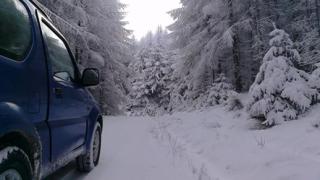Driving

Please keep the following in mind while driving through the woods.
Watch for and obey posted speed limits. Forest Service roads can be narrow, rocky, and are not meant for high speeds.
Be careful braking on gravel roads. Allow more time and distance when coming to a stop.
Beware of rocks, boulders, road washouts, downed trees and brush on the roadway.
Use appropriate tires for the terrain and conditions you’ll be traveling. Remember to stay on authorized roads.
Plan appropriately for food, gas, and lodging, which may not be readily available along Forest Service roads. Always carry extra food and water.
Carry a car kit, equipment, tools, and supplies, in case of an emergency.
Always let someone know your plans and stick to those plans.
Winter driving can pose its own challenges
In addition to the tips above, keep these suggestions in mind, too:
Check your state’s Department of Transportation website for information on road conditions, closures, and restrictions.
Follow the National Highway Transportation Safety Administration detailed winter tips.
Check current and forecast weather conditions.
Check the forest or grassland website where you plan to go for any posted alerts.
Make sure that your car is in good mechanical order. Check tire condition, antifreeze and motor oil levels, and the entire exhaust system for leaks. Ensure that all hoses and belts are in good condition.
Pack extra layers of clothing, including rain gear, socks, gloves or mittens, and a warm hat.
Bring a winter emergency kit, which should include a flashlight, map and compass, matches in a waterproof container, whistle, fire-starter, nylon cord, pocketknife, high-energy food, plastic tarp, space blanket, signal mirror, first aid kit, duct tape for repairs, and a metal container for melting snow.
Remember: You are responsible for your own safety and for the safety of those around you.
